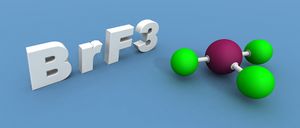Fluoride
| See Also | Minerals |
|---|
Fluoride is sometimes referred to as an essential mineral; yet there is no evidence to suggest that it is such. In the 1930s, it was found that high levels of fluoride intake could lead to a condition known as dental fluorosis. It was also found that individuals living in areas with high incidences of dental fluorosis also had fewer dental caries. In 1945, fluorination of water began as a means to reduce the incidence of dental caries. Fluorinated water contains 0.7 to 1.2 parts per million or 0.7 to 1.2 mg per litre. This mandatory ingestion of fluoride has created much controversy, but it continues to be seen by many as an important public health measure. There are concerns that children may be exposed to too much fluoride, and although a reduction in the exposure level has been suggested by the American Academy of Pediatrics, the incidence of dental fluorosis continues to increase.
Contents
Food Sources
The following foods have the highest concentration of fluoride. For a more expansive list on food sources of specific nutrients visit Health Canada's Dietary Reference Intakes for Elements or USDA's National Nutrient Database
- Rich Sources: teas and marine fish
- Other Rich Sources: water and fluorinated toothpastes, oral supplements, rinses, gels, and some processed foods and beverages.
Uses
The following are the primary uses for Fluoride.[1]
- Dental Caries: Epidemiological studies have shown that areas receiving less fluoride also have a higher incidence of dental caries. Clinical studies have supported this notion. The mechanism by which this works is not fully understood. Fluoride may help to remineralize the enamel and also decrease the concentration of cavity-causing bacteria in the mouth.
- Osteoporosis: Fluoride use for osteoporosis is still experimental and is not yet approved for prevention or treatment.
Assessment Procedure
- None are available
- Dental check-ups twice a year are recommended.
Prescribing Considerations
- Fluoride is available as a prescription in the form of sodium fluoride. Fluoride makes up about 45% of sodium fluoride, so 1.1mg of sodium fluoride is approximately 0.5mg of fluoride.
- Highly fluorinated waters are also available containing 3 parts per million or 3mg/L.
- For prescription use, it is available as a chewable tablet, cream, gel, liquid, lozenge, and solution.
- Sodium fluoride is available for over the counter use as a gel, paste, or solution.
- The recommended dosages varies based on age and health status. To determine what your specific requirements are talk to your naturopathic doctor or other trained medical professional.
The Food and Nutrition Board of the Institute of Medicine of the U.S. National Academy of Sciences has recommended the following adequate intakes (AIs) for fluoride. The upper limits (ULs*) are found in brackets: [1]
- Infants:
- 0-16 months: 0.01mg/day (0.7mg/day*)
- 7-12 months: 0.5mg/day (0.9mg/day*)
- Child:
- 1-3 years: 0.7mg/day (1.3mg/day*)
- 4-8 years: 1mg/day (2.2mg/day*)
- Adolescent:
- 9-13 years: 2mg/day (10mg/day*)
- 14-18 years: 3mg/day (10mg/day*)
- 'Adult:
- Males (19+ years): 4mg/day (10mg/day*)
- Females (19+ years): 3mg/day (10mg/day*)
- Pregnancy and Lactation (14-50 years): 3mg/day (10mg/day*, but should avoid intake greater than the AI)
Excess Symptoms
Symptoms may include:
High levels can also lead to a condition known as dental fluorosis characterized by mottled enamel. Skeletal fluorosis may also occur with symptoms of bone pain, stiffness, and limited movement. Lower extremity pain syndrome has been reported caused by stress fractures.
Safety
- General adverse effects: At the recommended levels for water fluorination and dental caries prevention, fluoride is general well tolerated. Adverse effects have been reported at doses of 5-10mg/day but are more common at 10-20mg/day or higher (see "Excess Symptoms").
- A single dose of sodium fluoride of 5-10g may be lethal. Less than 1g of sodium fluoride has caused serious poisoning.
- Children: Fluoride supplementation is not recommended in children under 6 months of age.
- Pregnancy and Breastfeeding: Should avoid intake of greater than the AI (3mg/day).
- Contraindications: Use of supplements is contraindicated in areas where fluoride water content is greater than 0.6 part per million (ppm) or 0.6 mg/L. Fluoride is also contraindicated in those with a hypersensitivity to fluoride.
Drug Interactions
- Drug Interactions include: [1]
- Aluminum Hydroxide - Concomitant intake can cause decreased absorption of fluoride.
Nutrient Interactions
- Nutrient Interactions include: [1]
- Calcium - Concomitant use can cause decreased absorption of fluoride. This includes foods rich in calcium.


